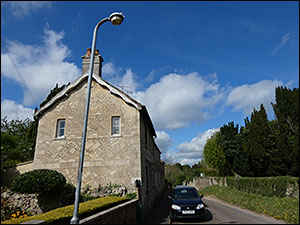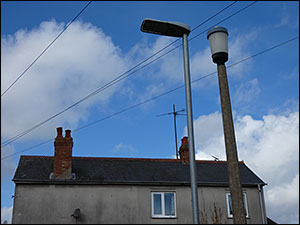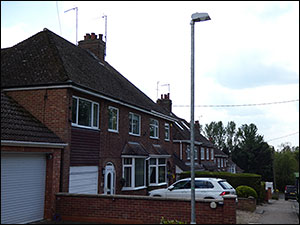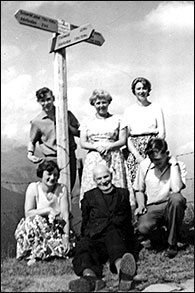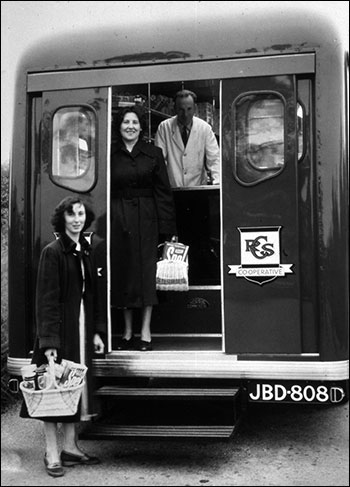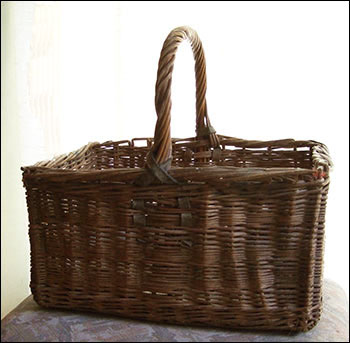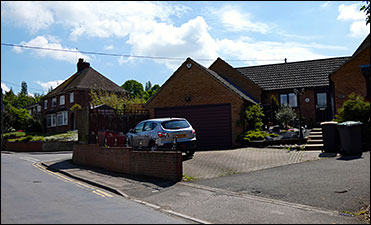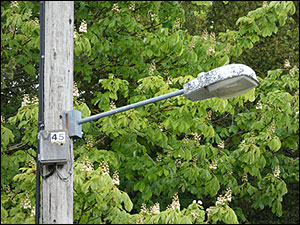|
|||||||
| Article & photographs by Paul Wright, 2019 |
|||||||
|
Lighting at Wymington
|
|||||||
|
|||||||
|
Wymington residents are now benefitting from having the latest LED lighting technology installed in the village during 2019. The benefits of the LED lamps (light emitting diode) over the traditional incandescent and fluorescent ones are that they are very much more efficient. It's probably something that we take for granted in these modern times, but going back to the late 1800's in the village, things were very ground breaking indeed! And the streets of Wymington were about to be illuminated by oil lamps, and a special meeting of the parochial electors was called on October 25th 1895 to discuss the subject. Mr. T. Dickerson moved the following resolution, viz. that the provisions of the Lighting and Watching Act of 1833 be adopted for the Parish of Wymington. That act was adopted by some fifteen votes, and the oil lighting was then installed. A dozen lamp standards were erected and the lamps were lit for the first time on November 12th,1895. This act gave the Council the powers to fix lamp brackets to private houses,and they did so in several cases. But one such owner was threatened with prosecution for repeatedly removing the bracket from his cottage. People were then needed for the task of lighting the lamps of course, and tenders were invited for the office of "lamplighter and caretaker, and a couple of men said they were interested in this new role. The first application was from Mr Alfred Dickerson,he offered to do it for 4/9d per week. But he was undercut by a penny per week by Mr Walter Wooding, who came in at 4/8d per week. So Walter was appointed to the post with the remuneration stated in his application.This was unanimously resolved that he be instructed to put out the lights at 9.30 each night with the exception of a Saturday, when they should remain alight for an extra half an hour until 10 o'clock. A change came about at the next meeting to make it 10 o'clock each week night and 9 o'clock on Sundays. By 1900 the lamplighter wages had risen to 1/1d each night, with extra pay for the two lamps erected on the new estate of Little Wymington, this was to be just over 3d per night. This we called "Old Wymington",as opposed to New Wymington being the houses at the top of what my late father Jack Wright called "Drews Hill"; this is where the former Old Rectory now stands. The hill took its local name after the vicar Mr Charles Edward Drew, who was in service at St Lawrence church from 1892-1913.
|
|||||||
By 1910, the Gas Company agreed to supply the village with gas, and by August the streets were lit by town gas, costing 2/10d per cubic foot. Luckily for Wymington, the council in nearby Riseley said that they would like to avail themselves of the redundant oil lamps, which Wymington had been using for over a dozen years, so nothing went to waste, and Wymington did some early recycling! The Gas Company was now employing the lamplighter at a wage of 10 shillings a week (yes, '10 bob' in old money). He lit, extinguished, and cleaned the lamps and maintained the standards. There was a curious clause in the Gas Company contract though? The lamps were to be lighted for nine nights short of each month which time should be regulated by the rising of the moon, and that the lamps should not be lit for the said nine nights commencing when the moon was seven days old. Over the years there were just three occasions when the village was without its street lighting. It was off throughout both world wars and during the coal strike of 1920. Lighting was also restricted during the coal strike of 1926. In that strike the miners were out for several months before being forced, by their own economic needs, to return to the mines. By the end of that November, most miners were back at work. There was a downside though, and many remained unemployed for several years. When I was growing up in South Grove during the early 1950's I do remember a gas lamp at the bottom of the Grove. This was standing outside of what was the shop, which was owned by the Faulkes family; they sold it to the good old Co-op. It remained there until about the 1970's and then closed. The former site is now a small development called "The Brambles".
So home delivery is by no means a new thing, and we were well served by Garrett's the butchers from Bozeat, and they came on a Friday evening, and a Mr Tebbutt used to sell fruit and veg door to door from his old blue Ford van mainly on a Saturday afternoon.
Who could forget the early morning pint of milk delivered by Keith Abbott on his horse and cart from Manor Farm in the village, or by the electric milk float by Ray Parker for the Co-op, or maybe local chap Graham Barnes for what was then Northern Dairies? |
|||||||
|
Getting back to the electric lights of my youth, these were a vast improvement over the old town gas system, and the lights were on a manual timer clock that had to be adjusted twice a year to accommodate Greenwich Mean Time (GMT), and for the summer months British Summer Time (BST). This adjustment meant that an employee of the then East Midlands Electricity used to erect his ladder against the wooden pole and manually adjust the time clock that would turn the lights on and off at certain time's of the day or night.
This chap lived in the village up at South Grove, and his name was Mr Pettit: he would also fit new bulbs to the failed units of course.
At that time there was a single company for your electricity or gas supply, and prices tended not to fluctuate as they did after privatisation in 1990. The current Wymington council members in 2019 are Mr Adrian Short, Mr S. Moore, Mrs L. Jaquest, Mr J.Warner, Mr R. Major, Mr J.Wilson and Mr M. Sugars. So over a period of 125 years, Wymington has moved from having street lighting that had been oil powered, to the state of the art LED lamps that came on stream during the spring of 2019. |
|||||||
